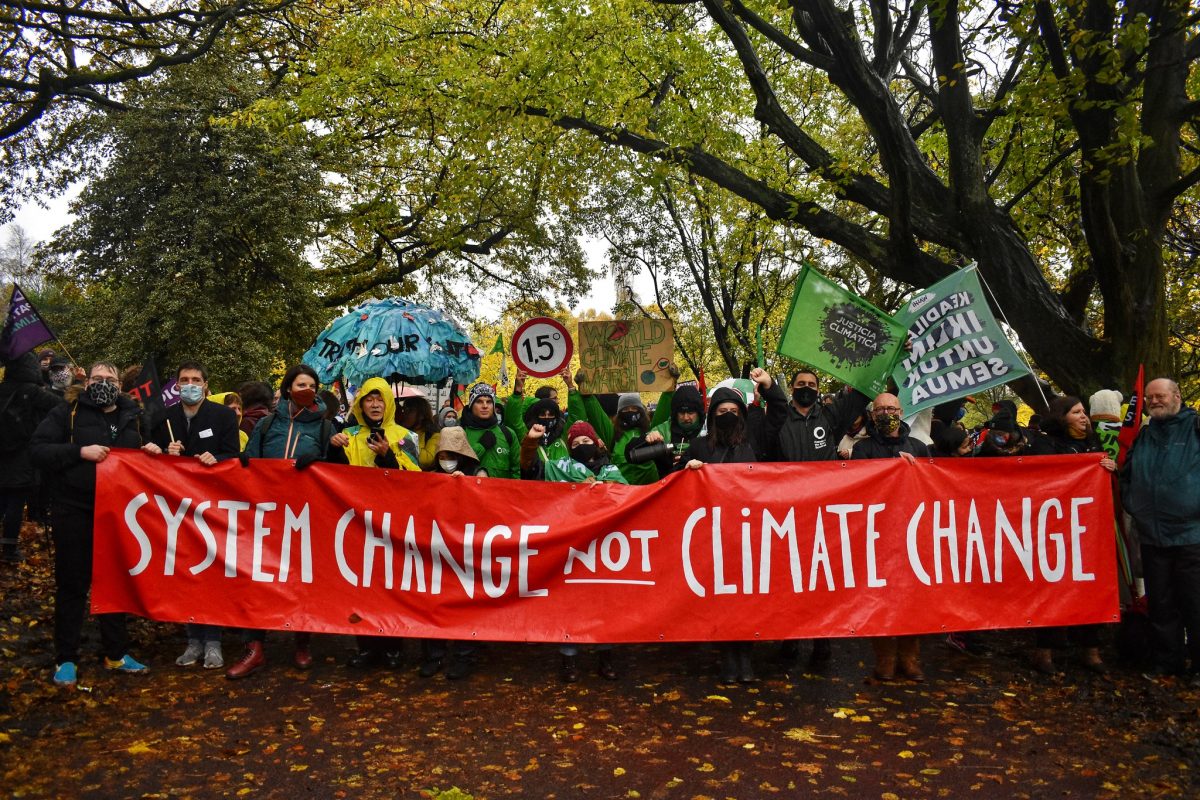
Time to get Aarhus in order: access to justice in environmental matters in Scotland
This blog was first published in Scottish Justice Matters Volume 3:1 March 2015
Ten years on from the ratification of the Aarhus Convention on Access to Information, Public Participation and Access to Justice in Environmental Matters, the UK remains in breach of provisions under its third, and perhaps most important, pillar requiring legal remedies. The Aarhus Convention recognises that protection of the environment is essential for the prosperity – and simply continuation – of our life on earth and introduces rights and responsibilities to that end. Aarhus is about enabling decision-makers to make better decisions in the context of the environment we depend on. It invol ves people and communities in decision-making, enables us to speak out on behalf of the environment and puts a duty on citizens to act in its defence. Without that credible threat of legal action, as enshrined under pillar III, there is little or no fear of sanction for public bodies, developers and other decision-makers bound by public participation requirements and environmental law, and therefore less incentive to act fulsomely on these.
ves people and communities in decision-making, enables us to speak out on behalf of the environment and puts a duty on citizens to act in its defence. Without that credible threat of legal action, as enshrined under pillar III, there is little or no fear of sanction for public bodies, developers and other decision-makers bound by public participation requirements and environmental law, and therefore less incentive to act fulsomely on these.
Cases such as McGinty vs Scottish Ministers illustrate a number of the barriers that individuals and communities face both when trying to exercise their rights to participate in decision-making and in attempting to give the environment a voice in court. Mr McGinty, a local bird watcher, and his community, learned of the inclusion in the National Planning Framework 2 (NPF) of a new coal fired power station at Hunterston that would destroy the SSSI he visited daily, at a public meeting only after that decision had been taken. Designation as a national development under NPF removes the right to object on grounds of substance and principle to the need for a development during the subsequent planning process, effectively limiting input to relatively minor considerations. The coal plant had not been part of the main NPF consultation process, but included as a national designation at a later stage and only then subject to short of seven weeks consultation by way of supplementary Strategic Environmental Assessment, advertised in the Edinburgh Gazette, not locally.
In September 2009 Mr McGinty took Scottish Ministers to judicial review on the grounds of inadequate consultation under the SEA Directive. In January 2010 the petitioner was awarded the first ever Protective Expense Order, capping his liability at £30,000. Leaving aside his own estimated costs at upwards of £50,000, McGinty no doubt balked at his exposure under the PEO alone. It is hard to see how these expenses could ever be viewed as anything other than ‘prohibitively expensive’. Mr McGinty lost his case on the grounds of standing – subsequently overturned on appeal following the introduction of ‘sufficient interest’ by AXA General Insurance vs Lord Advocate – and mora. Both Lord Brailsford’s initial opinion (despite his reluctance to get into the merits of the case) and that of the Inner House on appeal additionally made it clear that they considered Scottish Ministers had lived up to their obligations under SEA.
It is hard to think of a case that better demonstrates the failings of the Scottish system to comply with the spirit of the Aarhus Convention. Setting aside the important matter of SSSIs and birds for a moment, the gross contradiction of a Government recently committed (with full Parliamentary backing) to rapid and essential greenhouse gas emission reductions subsequently committing to the construction of a coal fired power plant that would render it near impossible to meet its legally binding climate targets, was also at stake.
Last summer in Maastricht parties to the Convention upheld the findings of the Aarhus Compliance Committee that the UK had failed – once again – to comply with the requirement that access to justice in environmental matters must not be ‘prohibitively expensive’. Unlike the February 2014 ruling of the European Court against the UK for failure to ensure that access to justice under the Public Participation Directive is not prohibitively expensive, the decision of the Compliance Committee takes account of the recent improvements in cost limitation in all UK jurisdictions yet still finds the regime wanting. While the Aarhus Compliance Committee has fallen short of finding against the UK in respect of the Convention requirement for substantive review, the process focused judicial review of the Scottish system is arguably less compliant than the regime south of the border.
The Scottish expenses regime may have escaped the level of scrutiny our neighbouring jurisdictions have been subject to, as the recent European Commission infraction proceedings were triggered by cases from England and Northern Ireland. Again however, the Scottish system is more badly in need of reform. Under the current system, most Aarhus cases will be heard by way of judicial review. Judicial review can, of course, be enormously expensive. Codification of rules of court on Protective Expense Orders came into force in March 2013, in response to the EC infraction proceedings, despite protestations from the Scottish Government of full compliance with the Directive. While the rules are a significant improvement on the previous regime they are far from perfect. Petitioners’ exposure to expenses is limited to a downwardly flexible £5,000 in cases under the scope of the Public Participation Directive; broader Aarhus cases will be treated under the common law regime that saw fit to award caps of £30,000 in McGinty vs Scottish Ministers and £40,000 in Walton vs Scottish Ministers. Furthermore, only individuals and NGOs promoting environmental protection are eligible for a PEO under the rules, community groups are not.
Cuts to legal aid aside, Regulation 15 of the Civil Legal Aid Regulations has for many years acted as a particular barrier to applicants seeking financial assistance in environmental cases. The rule strongly implies that a private interest is not only necessary to qualify for legal aid, but that a wider public interest – practically inherent in most environmental challenges – will effectively disqualify the applicant (McCartney 2010). The recent introduction of caps on legal aid at an unrealistic (for a complex judicial review) £7,000, along with new 3-month time limits to bring a review, will only serve to exacerbate barriers, with individuals and communities unfamiliar with their rights and legal processes struggling not only to identify where a problem might have a legal solution, but to organise, fundraise and access necessary advice in such a short time frame.
Recent rulings of the European Court of Justice have made it clear that the ‘prohibitive expense’ requirement applies to all costs associated with taking legal action (R Edwards v Environment Agency C-260/11). An individual taking legal action in a public interest Aarhus case, who fails to qualify for legal aid, but secures a PEO, is still faced with considerable – prohibitive, in the view of Friends of the Earth – expense. The new rules of court impose a cross cap at £30,000 implying that this is the sum a petitioner can expect to incur for counsel, solicitors, court fees etc. Setting aside the fact that this may be a considerable underestimate for complex environmental judicial reviews, the rules assume that the prospect of paying out £35,000 if one’s case is not successful, is not prohibitively expensive. Given that that sum is considerably higher than average Scottish earnings, and that deprived communities tend to suffer from the brunt of poor environmental decision-making (SNIFFER 2005), the new cost regime is clearly in need of further reform.
The Scottish Government’s plan to consult on options for an environmental court or tribunal this year presents a welcome opportunity to consider a more holistic approach to Aarhus requirements instead of responding piecemeal to infraction proceedings and Compliance Committee decisions. While the recent announcement by the Lord President of a review into an Energy and Natural Resources specialist court indicates recognition of the complexity and high value of certain environmental issues at stake, to limit reform to the Court of Session may be to miss much of the opportunity before us.
The response to the urgency and enormity of global environmental challenges like climate change require re-thinking of all of our institutions. The environment and the communities who live with the consequences of poor environmental decision-making must be at the centre of Government thinking to better understand what is needed to create an accessible tribunal with a level playing field for people and developers. A fair, accessible system, balancing the needs of communities with the pressures of development, and enabling citizens to act on their duty to protect the environment, is not just a legal requirement under Aarhus but an absolute necessity in this age of increasing environmental precarity.
‘Litigation over the Environment: an Opportunity for Change’, a new report by Frances McCartney, commissioned by Friends of the Earth Scotland is available at www.foe-scotland.org.uk/litigationovertheenvironment
References
Fairburn J et al. (2005) Investigating Environmental Justice in Scotland: Links between Measures of Environmental Quality and Social Deprivation Final Report for sniffer.org.uk McCartney F (2010) Public Interest and Legal Aid Scots Law Times, 37, 201-204
